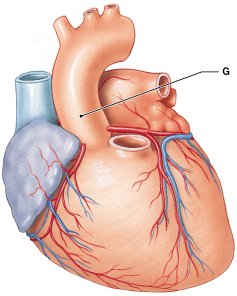Chapter 12-14 wrong answers from exam 2
1/21
There's no tags or description
Looks like no tags are added yet.
Name | Mastery | Learn | Test | Matching | Spaced |
|---|
No study sessions yet.
22 Terms
systole
Contraction of the ventricles is called
__________.
The muscular walls of the atria are thinner than those of the ventricles.
Which of the following statements is true about the anatomy of the heart?
pericardial cavity
The heart is surrounded by the
elastic
Thick-walled vessels, which are large and extremely resilient, are called ________
arteries.
nonspecific; specific
Innate immunity is ______________ whereas adaptive immunity is ________________.
pathogen
A foreign microorganism that may cause disease in humans is called a(n)
systolic pressure
Consider a blood pressure reading of 120/80. 120 corresponds to the
lymphedema
In the condition called ________, interstitial fluids accumulate in a region in which drainage has been blocked.
Capillaries
________ permit the exchange of nutrients, dissolved gases, and waste products between the blood and surrounding tissues.
tachycardia
A faster-than-normal heart rate is called
increase in cardiac output
If a decline in blood pressure or oxygen concentrations occurs, the cardiac centers then call for a(n) ________.
secretions of sebaceous glands
Which of the following is an example of a physical barrier, which is an innate defense mechanism?
palmar arch
Which of the following is(are) an anastomosis(es)?
dense bands of tough, elastic connective tissue
The skeleton of the heart consists of
cardiac output
The amount of blood pumped by the left ventricle in one minute is called the
ascending aorta
Identify the structure labeled "G."

They can reset the temperature-regulating center in the hypothalamus and raise the body temperature
Which is true regarding pyrogens?
erythropoietin
Which hormone is released by the kidneys when blood pressure falls or the oxygen content of the blood becomes abnormally low?
NK cells
Which of the following functions in immunological surveillance?
coronary artery disease
A disorder resulting from the buildup of fatty deposits in the coronary arteries is called
coronary
Systemic circulation is to the body as the _______________ circulation is to the heart.